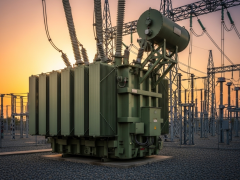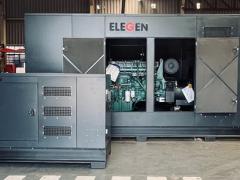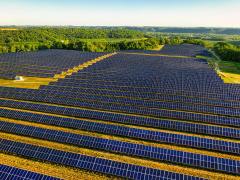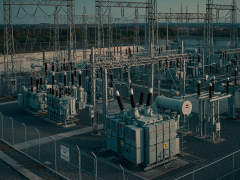The cost of new generation and storage is falling fast – because of how it’s built, not just what it is, says Dom Wills, Executive Director at SOLA Group.
The world’s leading authority on megaproject performance, Oxford professor Bent Flyvbjerg, has analysed more than 16 000 large-scale ventures across multiple sectors – from tunnels and dams to power plants and telescopes. His findings are sobering: 91% of megaprojects run over time, over budget or both. Just 0,5% meet cost, schedule and benefit expectations.
There is, however, one standout exception: solar photovoltaic (PV). Statistically, solar projects are by far the most consistently successful of all megaproject types. A key reason, I believe, is the system’s modularity – a powerful but often overlooked engineering advantage that underpins solar’s rapid cost and scale gains.
Modularity refers to the ability to break down large, complex systems into smaller, repeatable units. These units – in this case, solar panels – can be refined through fast feedback loops, produced in high volumes and deployed with minimal specialised equipment. It’s this structure that has allowed the global solar sector to scale up from 40 GW in 2014 to over 550 GW in 2024 while cutting unit costs by 90% in the same period.
The benefits extend through the entire supply chain. Solar modules are standardised to fit into shipping containers, enabling low-cost global logistics. In South Africa, some utility-scale projects are now installing more than 5 000 panels per day using telehandlers and trained general labour – a pace unimaginable in traditional generation.
This growth has made a measurable impact. Solar PV showed the highest year-on-year increase of any electricity source between 2023 and 2024 – five times more than nuclear and over twice that of wind or hydro. For the first time, global electricity emissions are stable and projected to fall, even as demand continues to climb.
That demand is changing rapidly. Electrification of transport, data centres, heating and cooling is placing unprecedented pressure on global grids. In 2024 alone, electricity demand rose by 1 180 TWh. Solar and wind only added 840 TWh, leaving a clean energy shortfall.
The challenge isn’t just generation, it’s timing. Even with accelerated build rates, solar cannot supply after sunset without storage. But here too, modularity plays a role.
Lithium-ion batteries, made up of lunchbox-sized 5 kg cells, are being manufactured, tested and scaled in much the same way as PV. This has driven prices down from US$715/kWh to below US$100/kWh over the past decade. Quality and longevity have also improved significantly with systems like CATL’s Tectrans battery now supporting 1,5 million kilometre bus fleets.
As storage technology improves, the ability to match supply with demand, across hours or days, becomes feasible. Modular solar-plus-storage systems could soon replace not just peakers but also mid-merit and baseload functions traditionally reserved for fossil generation.
This matters in South Africa where electricity tariffs for large users have risen at above-inflation rates for two decades. Today, solar PV plants with up to eight hours of battery storage can offer time-of-use tariffs that undercut Eskom’s bulk supply prices.
While centralised generation continues to become more expensive, the opposite is true for decentralised, modular systems. And that’s what gives solar PV and storage their edge. They don’t just scale fast. They scale affordably, reliably and repeatably.
In a future defined by higher electric demand and lower carbon budgets, modularity is no longer a nice-to-have; it’s a structural advantage.













